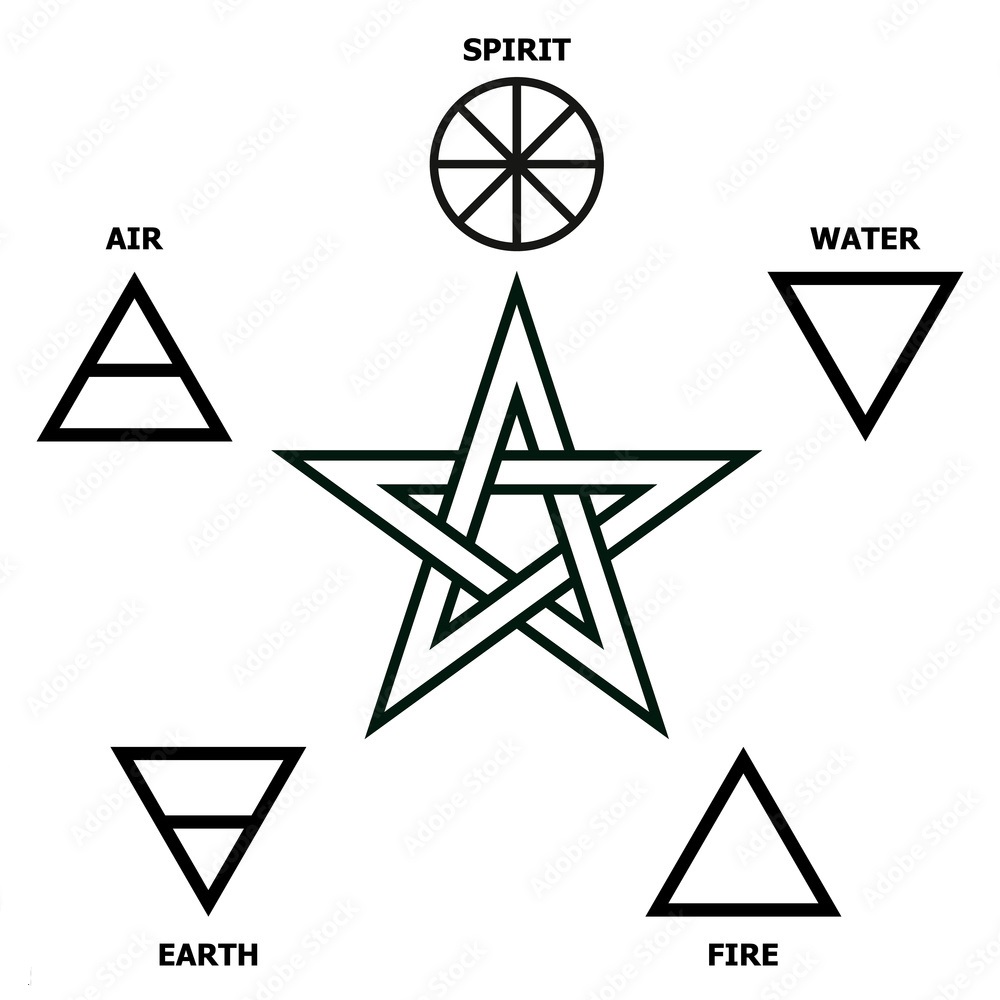The concept of the five classical elements (earth, air, fire, water, and spirit) dates back to ancient civilization and has been a fundamental part of various cultural and philosophical systems. Each element represents different aspects of the physical and spiritual world and is often associated with specific qualities, energies, and symbolism. Here’s a brief explanation of each element.
Earth.
Earth, represents the physical realm, stability, and grounding. It is associated with the soil, rocks, and all tangible matter. In many belief systems, the element of Earth is connected to the direction of North and the season of Winter. Earth is often linked to qualities like strength, endurance, fertility, and abundance. It symbolizes the foundation of life and our connection to the material world.
Air.
Air, represents the realm of thought, intellect, and communication. It is associated with the atmosphere and the invisible currents of wind. The element of Air is connected to the direction of East and the season of Spring. It is often linked to qualities like clarity, wisdom, creativity, and changeability. Air symbolizes the power of the mind, the breath of life, and the free flow of ideas and inspiration.
Fire.
Fire, represents transformation, energy, and passion. It is associated with flames, heat, and the transformative power of burning. The element of Fire is connected to the direction of South and the season of Summer. It is often linked to qualities like courage, willpower, vitality, and purification. Fire symbolizes both destruction and creation, as it can consume and give birth to new forms.
Water.
Water, represents the realm of emotions, intuition, and the subconscious mind. It is associated with bodies of water like rivers, lakes, and oceans. The element of Water is connected to the direction of West and the season of Autumn. It is often linked to qualities like adaptability, healing, purification, and fluidity. Water symbolizes the ebb and flow of life, emotions, and the cycle of birth, death, and rebirth.
Spirit.
Spirit, also known as Ether or Akasha, represents the transcendent element that connects all the other elements. It is considered the quintessence, the unifying force that permeates everything in existence. Spirit is not bound by the physical world but encompasses the spiritual and energetic aspects of reality. It is often associated with qualities like divine consciousness, intuition, and the interconnectedness of all life.
These five elements are not just literal substances but are also symbolic representations of various aspects of existence and human experience. They are frequently used in spiritual practices, rituals, and magickal workings to tap into their respective energies and influence the world around us. The understanding and interpretation of these elements can vary among different cultural and spiritual traditions, but their core principles remain influential in many belief systems.
